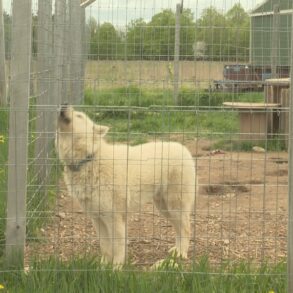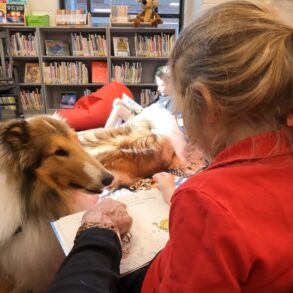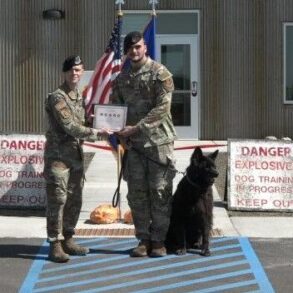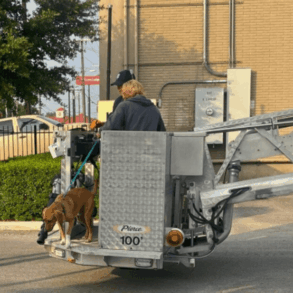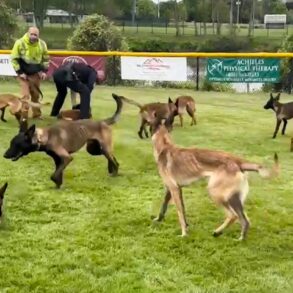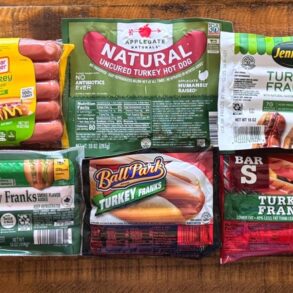When I was growing up, our household of seven was notable for its absence of pets like cats or dogs. My mother was firmly against allowing any domestic animal into her meticulously clean and hygienic home. She was deeply committed to the belief that animals belonged outdoors and that permitting them to live indoors, even as pets, reflected poorly on one’s character.
Fortunately, my childhood fears of cats and dogs were eased by the variety of pets that roamed freely in our 1950s neighborhood, which I viewed as my pets by extension.
Where I currently live, there’s a community blog that collects posts and comments from residents, along with alerts about the latest missing cat or runaway dog. Thanks to the quick response from Animal Control and the dedicated volunteers from a local animal welfare group, lost dogs are often found and returned within hours. Meanwhile, posts pop up like mushrooms after a rainstorm, offering comfort, encouragement, and prayers to frantic owners, while thumbs-up and heart emojis celebrate each pet’s safe return.
I have become so invested in these situations that at night, I find myself worrying about any pet still missing.
The ongoing stream of reports from news outlets—TV and radio broadcasts, newspapers, online news sites, and community blogs—makes it hard to overlook the increasing number of abandoned dogs in Connecticut.
Almost weekly, we hear heartbreaking stories of dogs in dire conditions, abandoned on roadsides, reports of animal hoarding that require the rescue of dozens of dogs, and similar acts of animal cruelty too disturbing to share.
For the past two years, shelters have consistently been full to capacity and beyond, despite the extraordinary efforts of approximately 500 non-profit organizations supported by thousands of dedicated volunteers, all committed to the overwhelming task of finding homes for every rescued dog. Equally burdened are three Humane Society facilities across the state.
Theories exist about the sources of this increase, alongside a clear culprit: the soaring costs of food and veterinary care. Initially, the increase in the number of dogs needing rehoming was attributed to the surge in adoptions during the COVID pandemic. Next, natural disasters in the U.S. and the relief efforts to rehome dogs in states like Connecticut were considered contributing factors.
Recently, the December 15, 2024, effective date for New York state’s Puppy Mill Pipeline Act, which prohibits pet stores from selling puppies, was cited as a likely cause.
However, some experienced observers suspect illegal puppy mill operations nationwide may thrive by transporting dogs for sale in other states. They estimate that illegal puppy sales in CT may account for at least 30% and as much as 50% of the current number of abandoned dogs overburdening our resources.
Connecticut’s predominance of no-kill shelters and robust non-taxpayer funding of the Animal Protection and Control Program (APCP), which provides vouchers for sterilization and pet adoption, make our state an attractive dumping ground for out-of-state dogs.
It’s not as if Connecticut lacks regulations concerning dogs. The Connecticut General Statutes are filled with laws protecting man’s best friend. In fact, abandoning a dog is deemed a criminal act.
When I decided to explore this thorny, complicated and relentless problem, I had the vanity to think that in doing so, I’d be able to arrive at a potential solution or two.
Instead, I find myself harkening back to the wisdom of a seasoned member of a highly respected animal welfare organization.
Owning a pet, particularly a dog, is a significant commitment and responsibility. Connecticut’s laws, procedures, and adoption requirements aim to reduce the chances of pets being surrendered or abandoned. Given the historical effectiveness of this system, the main issue may lie elsewhere.
I believe that our resources are likely stretched thin by the influx of abandoned dogs acquired through unlicensed and illegal transports across state lines.
Maybe more public information might encourage people to call the authorities when a van filled with adorable puppies of the most favored breeds parks off a State Highway exit and displays a hand-scrawled sign that reads “PUPPIES!!!”
Many experts believe that puppies obtained through a process intended to bypass Connecticut’s safeguards are surrendered or abandoned in the greatest numbers.
When the public learns to equate illegal puppy sales from unlicensed sources with the unsustainable demands that threaten the wholesome operation of our kennels — and acknowledges the extraordinary protections built into our system of laws for pet adoptions — I have faith that we will succeed in turning the tide in our favor.
Gloria Gouveia is a member of the Connecticut Mirror’s Community Editorial Board.
This post was originally published on this site be sure to check out more of their content.










